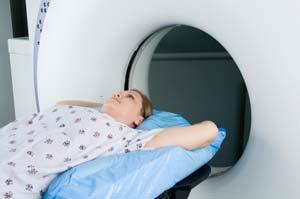 Novartis Pharmaceuticals Corp. will pay $422.5 million in penalties for marketing an epilepsy medicine for unapproved uses and for paying kickbacks to doctors to prescribe it and five other drugs, federal officials announced Thursday.
Novartis Pharmaceuticals Corp. will pay $422.5 million in penalties for marketing an epilepsy medicine for unapproved uses and for paying kickbacks to doctors to prescribe it and five other drugs, federal officials announced Thursday.
The company agreed to plead guilty to distribution of a misbranded drug, a misdemeanor, and pay a criminal fine and forfeiture totaling $185 million in the case involving Trileptal, U.S. Attorney Zane Memeger said at news conference in Philadelphia.
Novartis fined $422.5M in marketing, kickback case
Female sexual dysfunction 'was invented by drugs industry'
 Female sexual dysfunction – which is claimed to affect up to two thirds of women – is a disorder invented by the pharmaceutical industry to build global markets for drugs to treat it, it is claimed today.
Female sexual dysfunction – which is claimed to affect up to two thirds of women – is a disorder invented by the pharmaceutical industry to build global markets for drugs to treat it, it is claimed today.
Drug companies have invested millions in the search for a female equivalent of Viagra, so far without success. But while doing so they have stoked demand by creating a buzz around the disorder they have created, according to Ray Moynihan, a lecturer at the University of Newcastle in Australia.
Painless laser device could spot early signs of disease
 Portable devices with painless laser beams could soon replace X-rays as a non-invasive way to diagnose disease. Researchers say that the technique could become widely available in about five years. The method, called Raman spectroscopy, could help spot the early signs of breast cancer, tooth decay and osteoporosis.
Portable devices with painless laser beams could soon replace X-rays as a non-invasive way to diagnose disease. Researchers say that the technique could become widely available in about five years. The method, called Raman spectroscopy, could help spot the early signs of breast cancer, tooth decay and osteoporosis.
Scientists believe that the technology would make the diagnosis of illnesses faster, cheaper and more accurate. Raman spectroscopy is the measurement of the intensity and wavelength of scattered light from molecules.
After 10 years in US, abortion pill still divisive
 Ten years ago, after long and bitter debate, the U.S. Food and Drug Administration approved use of the abortion pill by American women. It is hailed as safe and effective, but new turmoil may lie ahead as the pill's proponents consider using telemedicine to make it more available.
Ten years ago, after long and bitter debate, the U.S. Food and Drug Administration approved use of the abortion pill by American women. It is hailed as safe and effective, but new turmoil may lie ahead as the pill's proponents consider using telemedicine to make it more available.
Already, a pioneering telemedicine program in Iowa has provided the pill to about 1,900 women - with a doctor able to consult with a faraway patient in a video teleconference, then unlock a container by remote control to release the pill. To the alarm of anti-abortion activists, abortion providers in other states are pondering whether similar programs would enable them to serve more women, especially in rural areas.
Diesel Dangers: Mining Companies Get First Look at Government Cancer Study
 A long-delayed government epidemiological study of possible ties between diesel exhaust and lung cancer in miners may finally be published this fall -- but only after a mining industry group, represented by the Washington lobbying powerhouse Patton Boggs, finishes a pre-publication review of the study's drafts.
A long-delayed government epidemiological study of possible ties between diesel exhaust and lung cancer in miners may finally be published this fall -- but only after a mining industry group, represented by the Washington lobbying powerhouse Patton Boggs, finishes a pre-publication review of the study's drafts.
Eighteen years in the making and eagerly awaited by public health officials, the cancer study evaluates more than 12,000 current and former workers from eight mines that produce commodities other than coal. Its goal is to determine whether ultrafine diesel particulate matter -- a component of exhaust from diesel-powered machinery -- poses a serious hazard to miners in confined spaces.
$93,000 cancer drug: How much is a life worth?
 Cancer patients, brace yourselves. Many new drug treatments cost nearly $100,000 a year, sparking fresh debate about how much a few months more of life is worth.
Cancer patients, brace yourselves. Many new drug treatments cost nearly $100,000 a year, sparking fresh debate about how much a few months more of life is worth.
For the last decade, new cancer-fighting drugs have been topping $5,000 a month. Only a few of these keep cancer in remission so long that they are, in effect, cures. For most people, the drugs may buy a few months or years. Insurers usually pay if Medicare pays. But some people have lifetime caps and more people are uninsured because of job layoffs in the recession. The nation's new health care law eliminates these lifetime limits for plans that were issued or renewed on Sept. 23 or later.
Nearly 30,000 Americans Get Cancer From This One Procedure EVERY Year: Will You?
 CT scans yield higher-resolution images than regular medical X-rays. Unfortunately, they also expose the patient to hundreds and sometimes thousands of times the amount of radiation.
CT scans yield higher-resolution images than regular medical X-rays. Unfortunately, they also expose the patient to hundreds and sometimes thousands of times the amount of radiation.
The routine use of CT scans has vastly increased. In 1980, there were roughly 3 million CT scans performed. By 2007, that number had increased to 70 million. CT scans are now being promoted to healthy people -- even whole body CT scans.
More Articles...
Page 139 of 233

 Health Glance
Health Glance






























